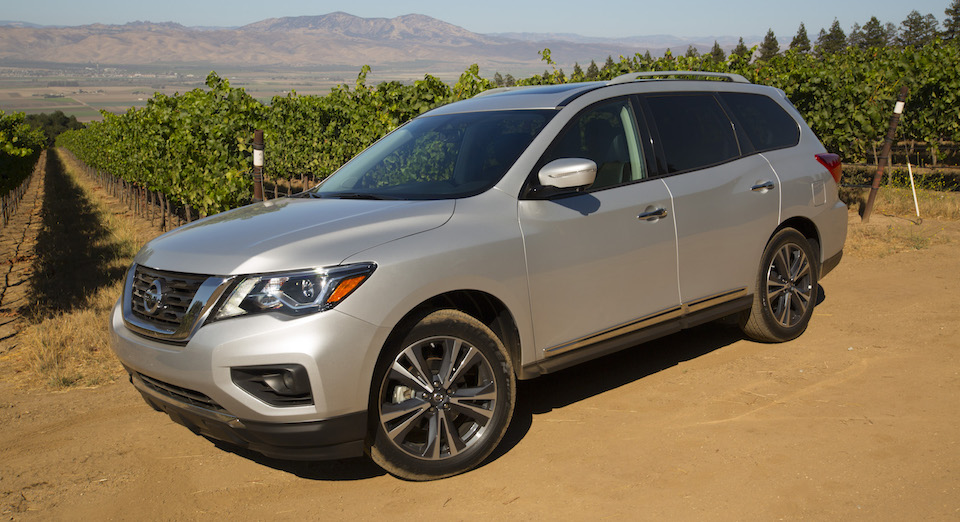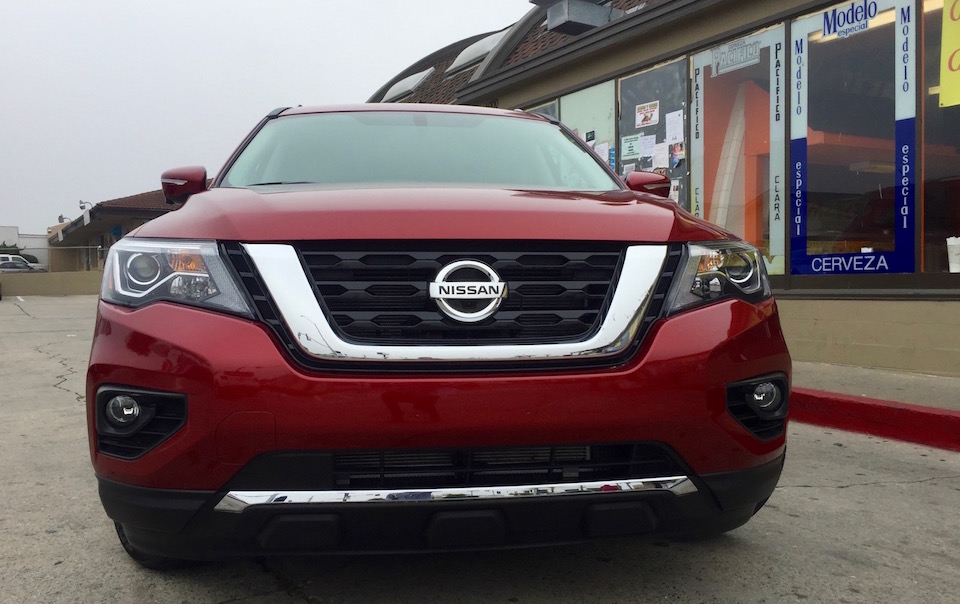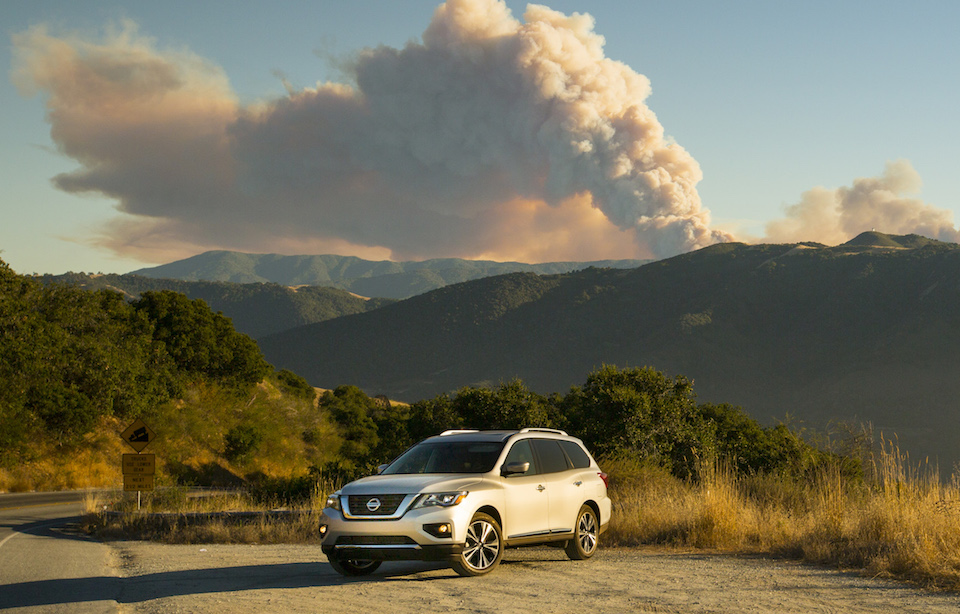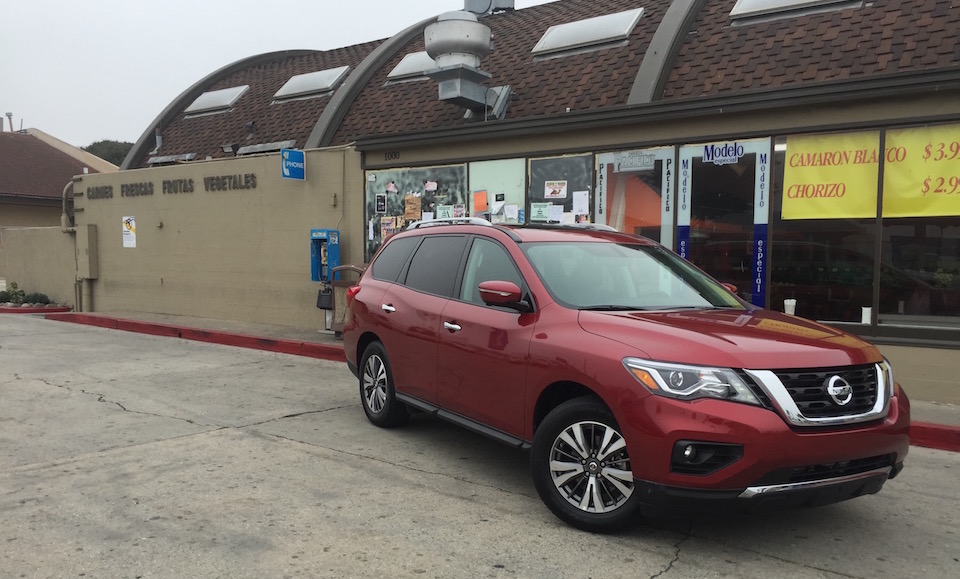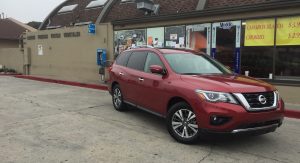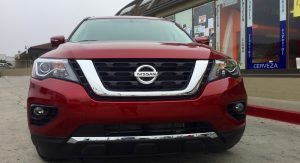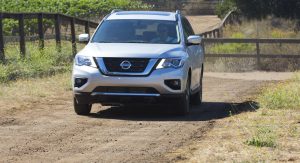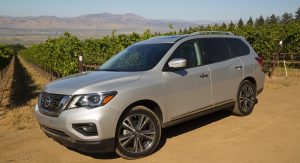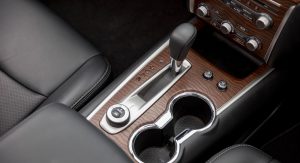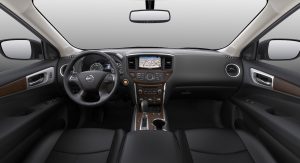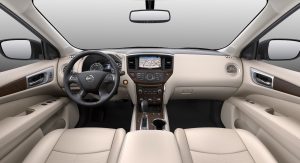The Nissan Pathfinder has been a household fixture long before the names Highlander and Pilot were introduced to driveways.
Even though it only recently joined the fray of three-row, seven-passenger crossovers, the Pathfinder at least has the name recognition to win fans who’ve thought an SUV was the ideal family vehicle for them.
But the 2017 Pathfinder has to bank on more than a name that’s been around for three decades, which is why Nissan insists the raft of improvements to its family hauler are enough to draw attention away from numerous capable rivals.
We’ve heard this before. The last few years have had Nissan officials talking up major improvements to staples like the Maxima, Altima and Sentra in order to bring them to the top of shopping lists in their respective categories. Like the latter two, the 2017 Pathfinder is Nissan’s realization they didn’t hit it out of the park the last time – while a lot of other companies did.
In trying to make the Pathfinder more of a cul-de-sac staple, Nissan admits they made it a little too car-like for SUV shoppers. After all, they already sell the swoopy Murano.
Instead of taking inspiration from Nissan’s cars, the 2017 Pathfinder gets a face that’s much more reminiscent of the 2017 Armada and Titan. It’s an improvement, with the droopiness of the old design mitigated by a more stern face and rear bumper that’s been lifted somewhat.
What it doesn’t fix, however, is the roundness in the middle of the car, with featureless sides that give it a somewhat dumpy profile. None of these three-row crossovers are true styling standouts, but they’ve been around long enough for designers to work at least a little magic to make them more special. The Pathfinder needs a little more of that magic.
Changes inside are less noticeable, though. There is, however, a substantially improved touchscreen system in the middle of the dash, which is better able to handle radio and navigation functions than the old system in that “new” Armada.
And being a Nissan, there’s a great around-view monitor on most versions that makes cameras on cars truly useful. But the 2017 Pathfinder also offers adaptive cruise control and forward collision alerts to keep up with the times.
Frankly, the Pathfinder isn’t that nice inside. Despite changes, the materials fail to impress and don’t look like they fit correctly all the time, even if they’re sturdy enough. The third-row seat doesn’t really fold flat, which is pretty ridiculous given rivals have long been able to do that. The front seats are oddly shaped and the front passenger’s is mounted far too high, even in its lowest setting. In fact, none of the seats appear to be shaped correctly, despite Nissan being known for hawking their NASA-engineered seats.
You do get that second-row seat that glides away enough for adults to enter even when a car seat is strapped to it, not that they’ll voluntarily sit back there.
So maybe that isn’t why you buy a Pathfinder.
The Pathfinder does have a couple of surprises when the parking lot pavement suddenly ends.
Despite being on the same basic platform as the Murano and Maxima, it’s an admirable tool for light off-roading, or basically to get you around horse trails as we used in Carmel, California. You have the choice of two-wheel drive and a four-wheel drive lock on models equipped with the system, as well as what’s essentially a crawl mode thanks to the flexibility of the CVT.
And yes, Nissan is very proud of the 6,000-pound towing capacity now bestowed on the Pathfinder. Which, yes, is noticeably more than many of its rivals. If you’re into that.
While the basic engine and transmission formula remains the same, Nissan as given the Pathfinder another shot of enthusiasm in order to keep up with newer competitors. The 3.5-liter V6 gains direct injection and 24 horsepower, up to 284 and mostly competitive with its peers. It doesn’t feel inadequate, but when there’s 4,500-pounds of car to move around it’s not very energetic.
Countering that, the CVT in the Pathfinder is a better match than some 8-or-9-speed or dual-clutch transmissions in most driving situations. And it feels more connected to the accelerator pedal and engine than the last Pathfinder I drove. Yet the power from the V6 can’t quite cure the CVT tendency for the engine to sit at high RPMs for extended periods of time. And I wonder how it would sound merging onto a highway if it were towing something and loaded up with a family’s belongings.
Big SUVs can now drive like good sedans. The Pathfinder, despite changes made this time to firm up the ride and stifle body roll, still drives like a big SUV. It’s still lumbering in tight spaces and floats around on the highway. The steering also gets far too light at speed and then weights up significantly at slow speeds, which is the opposite of what you typically want.
The Pathfinder wasn’t great to drive after a while. And the seats weren’t helping matters, either.
Like the Altima and the Sentra, the revisions to the Pathfinder made for 2017 keep it in the game, at least from a price perspective.
You’ll get a lot of car for less than $31,000 when the Pathfinder goes on sale next month, but this is still a Nissan that sells on price and stuff rather than on actually being a stellar example in its class. Adding a flashy new touchscreen, tailgate you can operate by dancing around the back of the car and a macho grille doesn’t address the way it drives.
The Honda Pilot is a notably better container for families, the Ford Explorer offers a wide array of engines and the Mazda CX-9 is unquestionably the more athletic choice. And I’ve gone so far as to say the Mitsubishi Outlander is still the least-expensive way to buy seven seats new.
Where does this leave the Pathfinder? Maybe you are the sort of person who values its towing capacity, its surprising usefulness off road or, again, its value pricing.
Or maybe you just really like your local Nissan dealer. And if that’s the case, make a Murano work for your life.
Photos: Nissan and Zac Estrada



